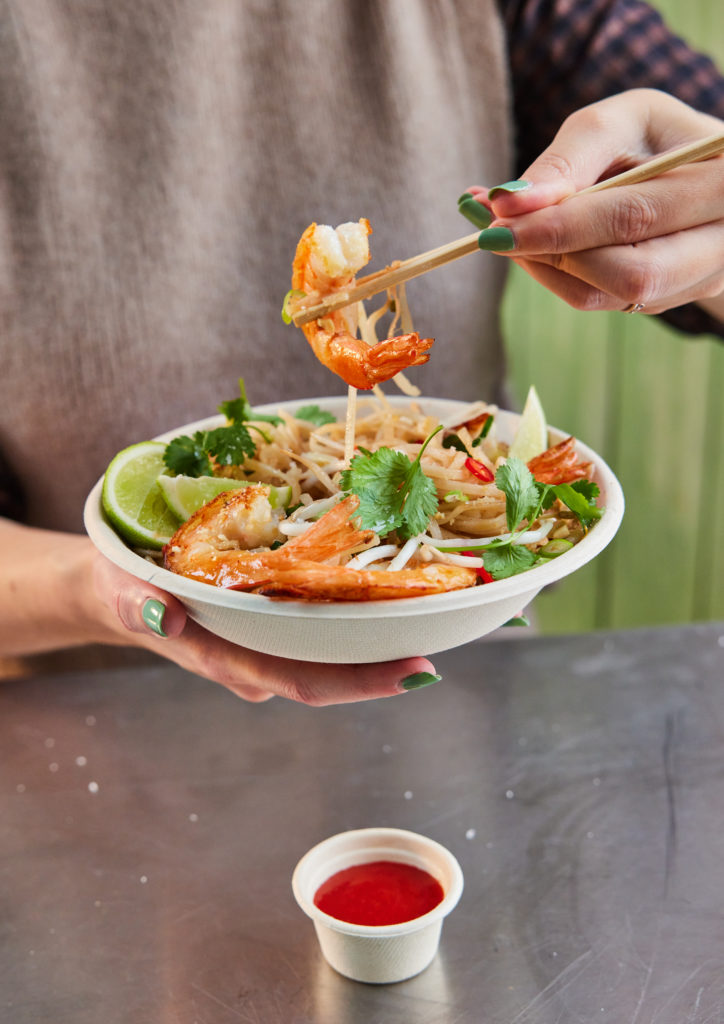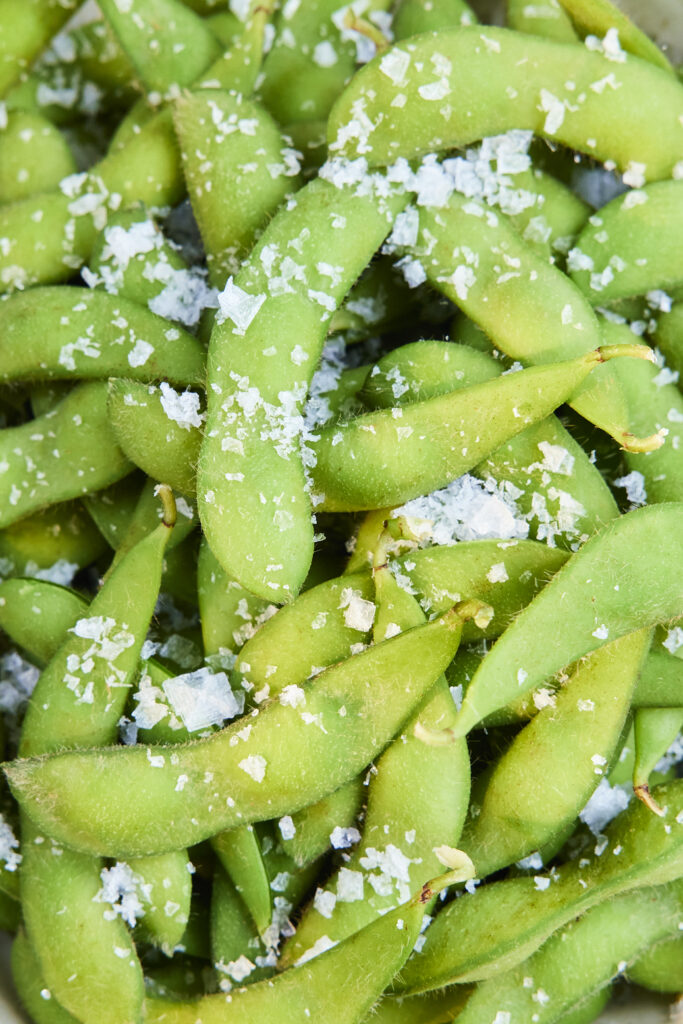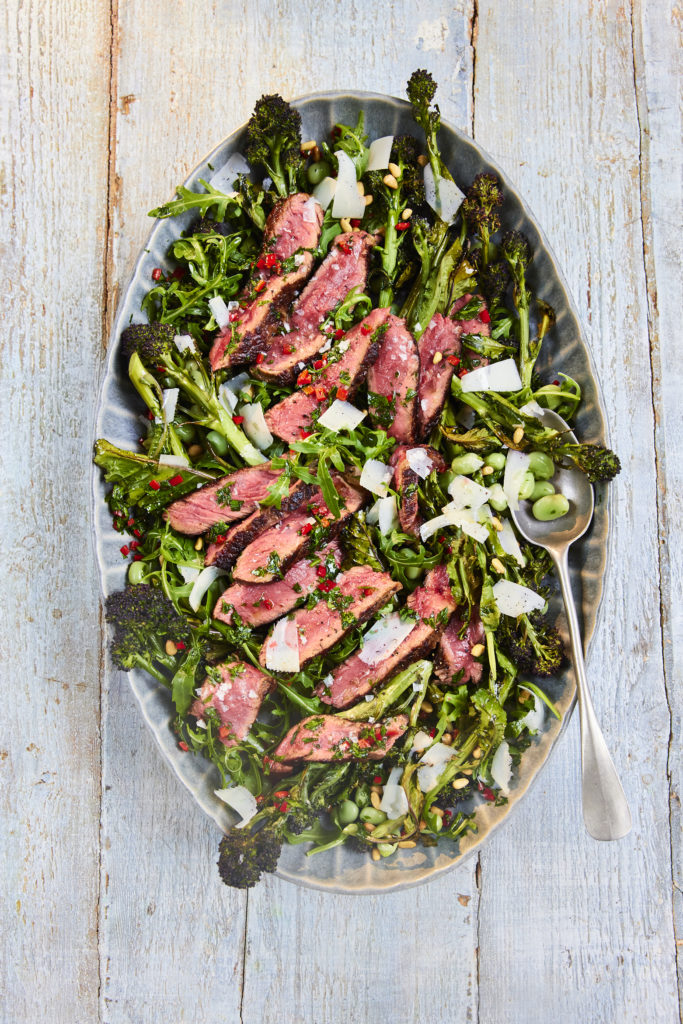This article will be exploring all things kimchi and understanding the fermentation process behind it.
We first delve into what kimchi is and the history behind the dish, before looking into how you can serve it with different dishes.
After that, we take a look at the science of kimchi, understanding the fermentation process involved to make the dish and the chemical processes that occur. With belly’s sure to be rumbling, we finish off by catching up with the talented Chef Judy Joo, where we share her incredibly tasty pogi kimchi recipe, (cabbage kimchi), and demonstrate her methods of making the much-loved dish.
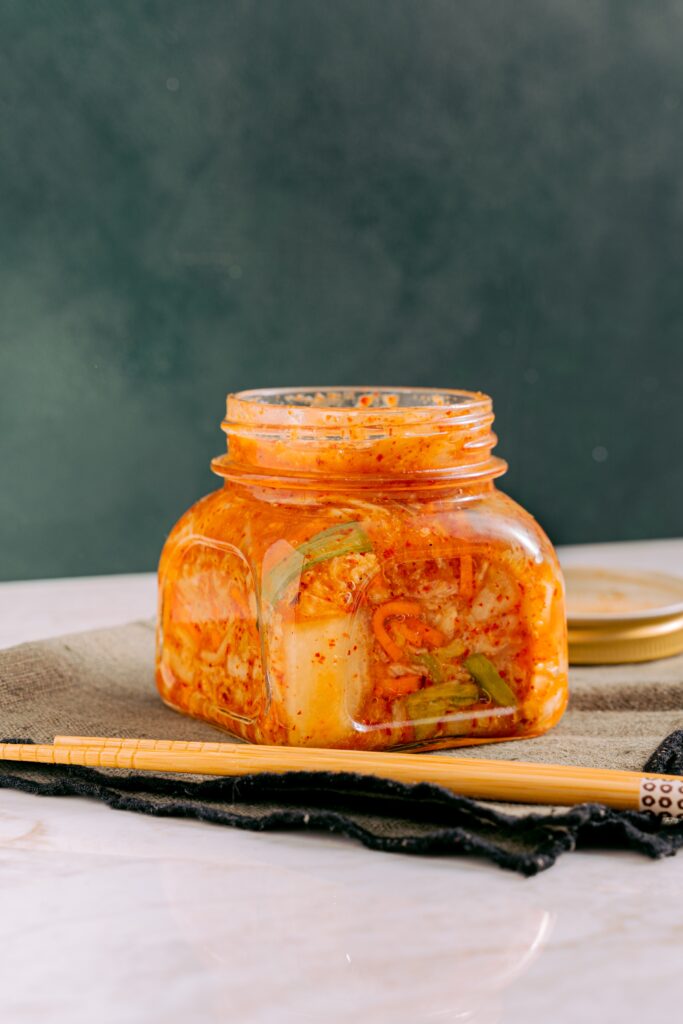
What is kimchi?
Kimchi is a traditional, fermented vegetable condiment for many Korean households, and has been for generations. The original name for kimchi was ‘chimchae’, which translates to ‘salted vegetables’. The origin of the dish began over 3,000 years ago, where Korean ancestors salted and fermented their vegetables to keep during the cold winter months, obtaining a balance between health and nutrition.
The dish has a complex flavour profile comprising of vegetables, such as napa cabbage, and the unique paste that you make from Korean red pepper powder (gochujangyong gochugaru), garlic, ginger, chilli, salt and fish sauce. This leaves a strikingly rich, red colour that has become kimchi’s signature.
You then slather the paste into the vegetables to make the kimchi. Although cabbage is the most popular vegetable to use, you can also include carrots, radishes and scallions which are all frequently used, depending on the region and season in which they are produced.
The taste of the mixture, once pickled and fermented, can vary depending on the ingredients used, but the dish generally has a spicy, sour and almost tangy taste to it. Generally, the longer you let the paste ferment in the fridge, the flavour will get deeper and intense.
Kimchi uses
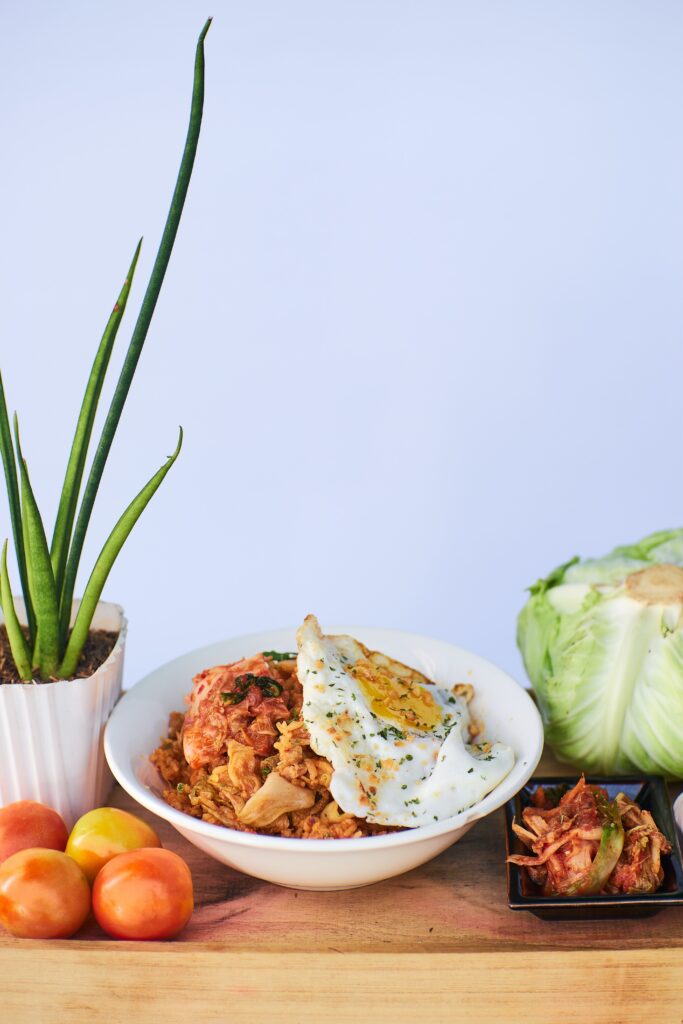
In Korean culture, kimchi can be served with every meal. For breakfast, it is usually paired with rice. Kimchi bokkeumbap (fried rice) is one of the post popular ways to enjoy kimchi in Korea.
The options are endless when serving kimchi for lunch and dinner, but kimchi jjigae (kimchi stew) is a staple in Korea. It’s a combination of kimchi, tofu and juicy pork, with each ingredients slowly melting in your mouth to create the ultimate flavour sensation.
What can you serve with kimchi?
Kimchi and fermentation
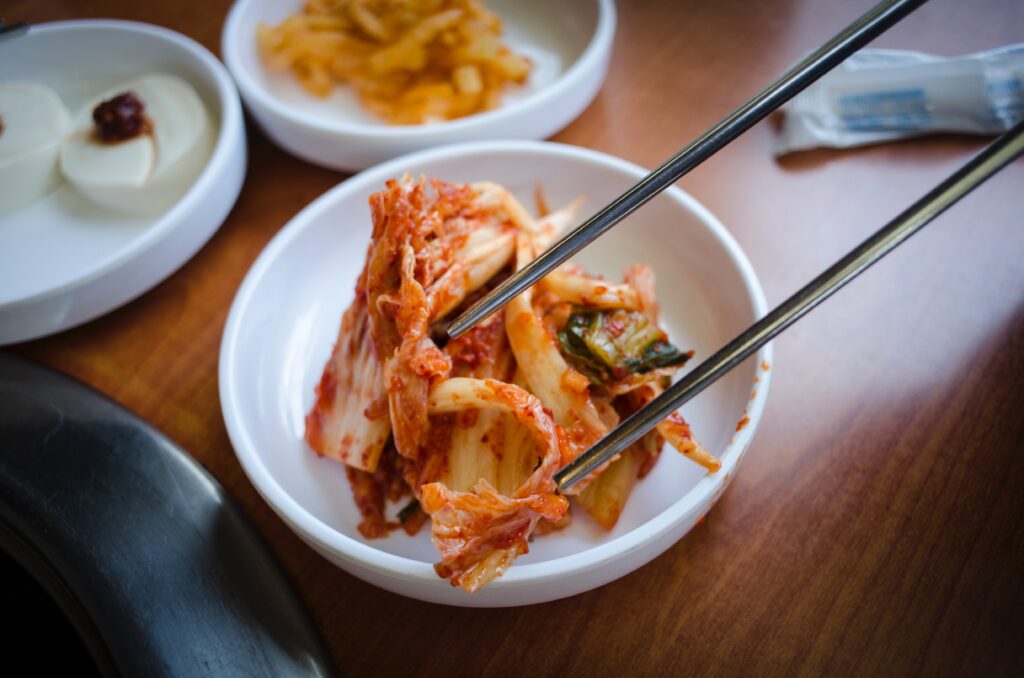
The process of making kimchi involves brining (salting) the vegetable mix to draw out the water content. This helps to preserve the ingredients and help the seasonings to penetrate and seep into the food over time. We recommend using Maldon sea salt flakes to provide the ideal concentration, which is a range between 2-5% to create the perfect kimchi.
Organic lactic acid, produced by the bacteria during fermentation of the vegetables, creates the optimum PH of 4.2 for kimchi to obtain it’s delicious and unique flavour that we all know and love.
The process can only occur when a salty and oxygen-free environment is successful. To put it simply, mix vegetables and salt together and put them in a air-tight container/jar.
The fermentation process of kimchi is considerably short in comparison to other fermented-based dishes such as sauerkraut. Kimchi can easily ferment at room temperature for 2-3 days, whereas sauerkraut would need to ferment for about 3-4 weeks!
Chef Judy Joo

Judy Joo is a talented Korean-American chef, restaurateur and author of two best-selling cookery books, as well as being featured in Forbes Travel Guide, National Geographic and The Guardian. Considered as being the leading expert in Korean cooking for the West, Judy showcases Korea’s cuisine in many distinctive and vibrant flavours, sharing her heritage throughout the dishes she creates.
From moving to London, Judy has shared her talent and skillset in an impressive selection of restaurants, including Restaurant Gordon Ramsay, Claridge’s and Boxwood Café. Today, she is admired by many for battling her way through the food industry and encouraging people to live outside of their comfort zone.
Cabbage Kimchi Recipe (Pogi Kimchi)
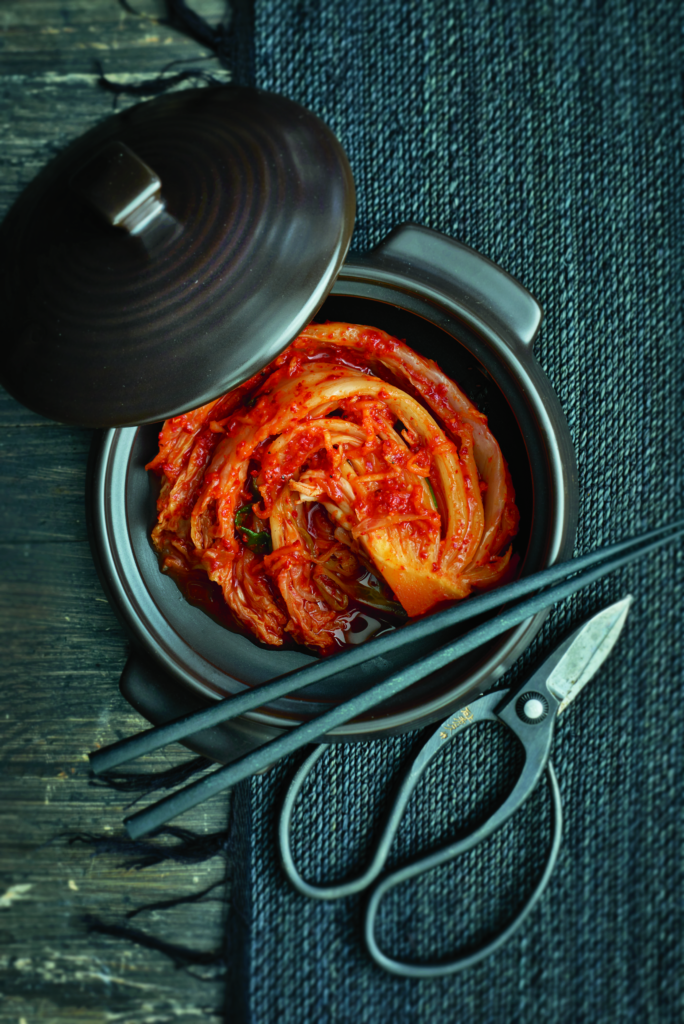
Judy reassures us that although kimchi may look daunting, the recipe is very straightforward! You only need to have one/two large bowls for the brining of the cabbage and large container to ferment it in. She does recommend that you wear plastic or latex gloves when smearing the paste onto the cabbage leaves to avoid them feeling a little tingly and potentially staining your hands (only temporally!).
Serves: 4.5 litres (8 pints)
Ingredients:
- 2 litres (3 1⁄2 pints) warm water
- 225 g (8 oz) coarse sea salt (we recommend Maldon Salt)
- 1 very large Korean cabbage or several heads Chinese cabbage (2.2–2.7 kg/5–6 lb total), bottom(s) trimmed, wilted and tough outer leaves discarded and rinsed well
- 2 small onions, roughly chopped
- 12 dried shiitake mushrooms
- 10 dried anchovies (myulchi), head and guts removed
- 6 spring onions, roughly chopped
- 64 cloves garlic, 8 crushed and the rest left whole
- 1 (25 cm/10 in long) piece dried kelp (dashima)
- 250 g (9 oz) gochugaru (Korean chilli flakes)
- 14 tbsp fish sauce or anchovy sauce
- 10 tbsp salted shrimp (saewoo jeot), rinsed
- 4 tbsp sugar
- 1 (18 cm/7 in) knob fresh ginger, peeled and chopped
- 3 carrots, julienned
- 12 spring onions, cut into 5 cm (2 in) pieces
- 200 g (7 oz) Korean white radish (mu) or mooli, peeled and julienned
Method:
- In a large bowl, stir together the warm water and 115 g (4 oz) of the salt until the salt has dissolved; let the salted water cool. Meanwhile, partially cut the cabbage(s) in half lengthways, starting from the root end and cutting about halfway to the top. Using your hands, pull the cabbage(s) apart to split in half completely. Repeat so that each half is halved in the same way, which keeps the leaves intact and whole.
- Loosen the leaves of each wedge so that they are easy to spread. Sprinkle the remaining 115 g (4 oz) salt over and between all the leaves, salting the core area more heavily. Put the cabbage into a large bowl (use two if they don’t fit) cut-side up. Pour the cooled salted water over the cabbage, then pour enough cold water into the bowl to cover the cabbage; don’t overfill the bowl, as some liquid will be drawn out of the cabbage. Weigh down the cabbage with a plate so the wedges are completely immersed. Leave at room temperature for 6–8 hours, flipping the wedges halfway through.
- Rinse the wedges well under cold running water and gently squeeze out any excess moisture. Put the wedges, cut-side down, in a colander and leave to drain for at least 30 minutes.
- Meanwhile, in a small saucepan, combine the onions, mushrooms, anchovies, spring onions, the 8 crushed garlic cloves and the kelp and bring to the boil over a high heat. Reduce the heat to maintain a simmer for 20 minutes. Strain the liquid, discarding the solids and leave the anchovy stock to cool completely.
- When the stock has cooled, in a food processor, combine the remaining garlic cloves, chilli flakes, fish sauce, salted shrimp, sugar and ginger and process until smooth. Add enough of the stock to make a smooth paste, about 475 ml (16 fl oz) total. Discard any remaining stock. Transfer the spice paste to a large bowl and stir in the carrots, spring onions and radish.
- Rub the spice paste all over the cabbage wedges and between each leaf. Pull the outermost leaf of each wedge tightly over the rest of the wedge, forming a tidy parcel. Pack the wedges into one or more glass or other non-reactive containers with a tight-fitting lid (see Tip, below). Press a piece of clingfilm directly on the surface of the kimchi, then cover. The kimchi can be eaten at this young stage or after it sits at room temperature and starts to get sour and ‘bubble’, about 2–3 days. Store the kimchi in the fridge, where it will continue to ferment at a slower pace. I like to age mine at least 2 weeks, but it really is up to preference. Cut the kimchi before serving.
Recipe: https://www.judyjoo.com/recipes/cabbage-kimchi-pogi-kimchi-50/
To Conclude…
This article has explored the unique history of kimchi and understanding the fermentation process behind it. Judy Joo’s tasty cabbage kimchi is a perfect example of how straightforward the dish is to make, with her recommendations on how to store the recipe before serving.
Make sure you have your Maldon Salt ready when making kimchi! If you are running out, please feel free to browse on our Where to Buy Page to find your nearest store in which stocks our beloved Maldon Salt.
Lastly, we LOVE seeing your creations – please tag us on Instagram using the #maldonsalt so we can share your own kimchi creations!
